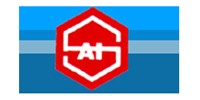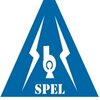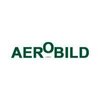Filter interviews by
Artee Flow Controls Project Engineer Interview Questions and Answers
Artee Flow Controls Project Engineer Interview Experiences
2 interviews found
I applied via Campus Placement and was interviewed before Mar 2023. There was 1 interview round.
(3 Questions)
- Q1. Logical question
- Q2. Introduce yourself
- Q3. About the projects
I applied via Campus Placement and was interviewed before Jun 2023. There was 1 interview round.
(2 Questions)
- Q1. Knowledge about PLC, DCS,SCADA.
- Q2. Knowledge about Induastrial Automation.
Interview Preparation Tips
- PLC
- DCS
- SCADA
- Industrial Automation
Top trending discussions






Interview questions from similar companies

Senior Engineer Interview Questions & Answers
Adroit Industries Indiaposted on 22 Jan 2024
I applied via Recruitment Consulltant
(2 Questions)
- Q1. Cnc machine related questions
- Q2. Process planning questions
(1 Question)
- Q1. Qualification, address, family members

I applied via Campus Placement and was interviewed before Jan 2021. There were 3 interview rounds.
Interview Questionnaire
1 Question
- Q1. 1. Basic Question Related GD&T 2. 8D,Kaizen,7QC Tools 3. Manufacturing Process Milling,Grinding,Boring
Interview Preparation Tips

I applied via Referral and was interviewed in Sep 2021. There were 2 interview rounds.
(1 Question)
- Q1. About quality , knowledge of instruments
(2 Questions)
- Q1. What are your salary expectations?
- Q2. Share details of your previous job.
Interview Preparation Tips
I applied via Approached by Company and was interviewed in Dec 2024. There was 1 interview round.
(2 Questions)
- Q1. What is the minimum thickness for wqt
- Ans.
The minimum thickness for WQT varies depending on the specific material and industry standards.
Minimum thickness for WQT is typically specified in engineering drawings or project specifications.
It is important to consult relevant codes and standards to determine the minimum thickness required for WQT.
Examples of minimum thickness requirements for WQT include 3mm for structural steel welding and 1.5mm for stainless stee
- Q2. What is the chloride value for ss piping hydrotest
- Ans.
The chloride value for ss piping hydrotest should be below a certain threshold to prevent corrosion.
Chloride value for ss piping hydrotest should typically be below 100 ppm to prevent corrosion
Higher chloride levels can lead to pitting corrosion in stainless steel piping
Regular monitoring and testing of chloride levels is important for maintaining the integrity of ss piping
Interview Preparation Tips

I applied via Job Portal and was interviewed before Aug 2022. There were 2 interview rounds.

(2 Questions)
- Q1. Plastic material, 8d
- Q2. Problem solving, customer compliance
Interview Preparation Tips
If anyone joins this company, he will hit himself in the foot.

Quality Engineer Interview Questions & Answers
Jairaj Ancillariesposted on 24 Mar 2025
I appeared for an interview before Mar 2024, where I was asked the following questions.
- Q1. What is the concept of 7QC (Seven Quality Control Tools)?
- Ans.
The 7QC tools are essential techniques for quality control and improvement in various industries.
1. Cause-and-Effect Diagram: Helps identify root causes of problems (e.g., fishbone diagram).
2. Check Sheet: A structured form for collecting and analyzing data (e.g., defect tracking).
3. Control Chart: Monitors process stability over time (e.g., X-bar and R charts).
4. Histogram: Displays frequency distribution of data (e.g...
- Q2. What are effective strategies for handling customer complaints?
- Ans.
Effective strategies for handling customer complaints include active listening, empathy, prompt resolution, and follow-up communication.
Active Listening: Fully concentrate on the customer's issue without interrupting. For example, repeat back what they said to confirm understanding.
Empathy: Show understanding of the customer's feelings. For instance, say, 'I understand how frustrating this must be for you.'
Prompt Resol...
- Q3. What are MACE and IATF audits?
- Ans.
MACE and IATF audits ensure quality and compliance in manufacturing and automotive sectors, respectively.
MACE stands for 'Manufacturing Assessment and Compliance Evaluation', focusing on quality in manufacturing processes.
IATF refers to the 'International Automotive Task Force', which sets standards for automotive quality management systems.
MACE audits assess compliance with industry standards and regulations, ensuring...
- Q4. What is GDNT
- Ans.
GDNT stands for Geometric Dimensioning and Tolerancing, a system for defining engineering tolerances and specifications.
GDNT provides a clear and concise way to communicate design intent.
It uses symbols and annotations to specify allowable variations in part geometry.
For example, a flatness tolerance indicates how much a surface can deviate from being perfectly flat.
GDNT helps in ensuring parts fit together correctly i...

Quality Engineer Interview Questions & Answers
Adroit Industries Indiaposted on 8 Jun 2022
(2 Questions)
- Q1. Vernier caliper least cosunt
- Q2. 0.02 of least count ?
- Ans.
0.02 of least count refers to the smallest measurement that can be made with a measuring instrument.
Least count is the smallest measurement that can be made with a measuring instrument.
It is determined by dividing the smallest measurement that can be read on the instrument by the number of divisions on the scale.
For example, if a ruler has 100 divisions and the smallest measurement that can be read is 1 mm, then the le...
(2 Questions)
- Q1. What's your strength
- Q2. Quick learner nee technology
Interview Preparation Tips

I applied via Referral and was interviewed before May 2022. There were 2 interview rounds.

(5 Questions)
- Q1. Tell you to measure micrometre reading
- Ans.
To measure micrometre reading, use a micrometre screw gauge and take the reading from the scale and thimble.
Clean the micrometre screw gauge before use
Place the object to be measured between the anvil and spindle
Turn the thimble until the object is firmly held
Read the scale and thimble to get the micrometre reading
Take multiple readings and calculate the average for accuracy
- Q2. Quality terms likes 7QC TOOL, 5S, 3M
- Q3. *In this company they have only one Post: Operator, same for iti AND BE, With same salary approx 13k in hand*
- Q4. Will ask about family
- Q5. Fishbone diagram, one of 7qc tool
- Ans.
Fishbone diagram is a visual tool used to identify the possible causes of a problem.
Also known as Ishikawa diagram or cause-and-effect diagram
Used in quality control to identify root causes of defects
Categories include people, process, equipment, materials, environment, and management
Example: A fishbone diagram can be used to identify the possible causes of delays in a manufacturing process
Artee Flow Controls Interview FAQs
Tell us how to improve this page.
Artee Flow Controls Interviews By Designations
Interview Questions for Popular Designations
- Project Manager Interview Questions
- Project Coordinator Interview Questions
- Project Lead Interview Questions
- Project Associate Interview Questions
- Senior Project Manager Interview Questions
- Senior Project Engineer Interview Questions
- Assistant Project Manager Interview Questions
- Project Engineer - Civil Interview Questions
- Show more
Artee Flow Controls Project Engineer Interview Process
based on 2 interviews
Interview experience
Interview Questions from Similar Companies
Artee Flow Controls Project Engineer Reviews and Ratings
based on 10 reviews
Rating in categories
|
Project Engineer
60
salaries
| ₹2.5 L/yr - ₹4.2 L/yr |
|
Applications Engineer
16
salaries
| ₹2.1 L/yr - ₹4.5 L/yr |
|
Sales Engineer
12
salaries
| ₹2.5 L/yr - ₹4.5 L/yr |
|
Senior Project Engineer
11
salaries
| ₹3.5 L/yr - ₹6 L/yr |
|
Sales Manager
8
salaries
| ₹11.5 L/yr - ₹15 L/yr |

Super Auto India

MELCO

Ferromatik Milacron

Devgiri Forgings
- Home >
- Interviews >
- Artee Flow Controls Interview Questions >
- Artee Flow Controls Project Engineer Interview Questions











